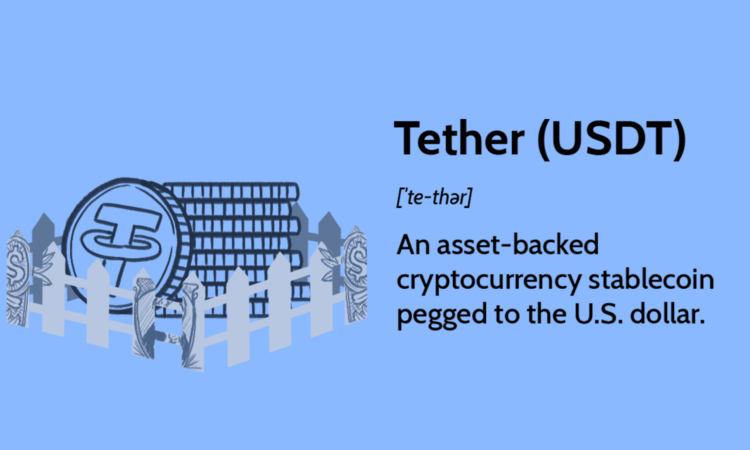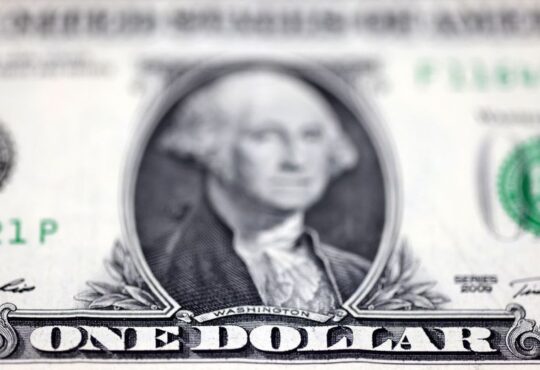
What Is Tether (USDT)?
Tether (USDT) is a cryptocurrency stablecoin pegged to the U.S. dollar and backed “100% by Tether’s reserves,” according to its website. Tether is owned by iFinex, the Hong Kong-registered company that also owns the crypto exchange BitFinex.
Tether was launched as RealCoin in July 2014 and was rebranded as Tether in November 2014. Originally based on the Bitcoin blockchain, Tether now supports Bitcoin’s Omni and Liquid protocols as well as the Ethereum, Avalanche, Kava, Polka, TRON, EOS, Algorand, and Solana blockchains.
As of March 2024, Tether was the third-largest cryptocurrency after Bitcoin (BTC) and Ethereum (ETH) and the largest stablecoin with a market capitalization of nearly $99 billion. In 2023 and early 2024, Tether’s USDT accounted for most of the exchanges out of other cryptocurrencies by volume.
Key Takeaways
- Tether (USDT) is a stablecoin, a type of cryptocurrency pursuing a steady valuation.
- Tether is used by investors who want to avoid the volatility typical of cryptocurrencies while holding funds within the crypto system.
- Tether has expanded to other geographic areas, including China, Mexico, and the Eurozone.
- You can purchase Tether via a crypto exchange or app using Kraken, Coinbase, and more.
Understanding Tether
Tether belongs to a fast-growing breed of cryptocurrencies called stablecoins, which aim to keep the price of their tokens stable, most commonly by tying it to the price of a traditional currency like the U.S. dollar.
Tether also issues tokens pegged to the euro, the offshore Chinese yuan, the Mexican peso, and gold, none with more than a small fraction of the market cap of its U.S. dollar-pegged USDT tokens.
Pegged Defined
The peg to a traditional currency, often backed by collateral reserves made up entirely or mostly of the pegged currency, ensures stablecoins aren’t subject to the same price volatility as more speculative cryptocurrencies like Bitcoin.
Transparency
Tether updates a breakdown of its reserves holdings daily on its website. As of March 3, 2024, it reported assets of $99.45 billion for USDT. As of the same date, Tether reported holding 84.58% of its reserves in cash, cash equivalents, short-term deposits, and commercial paper; 76.87% of this was U.S. Treasury Bills.
It also held 0.05% of its reserves in corporate bonds, 3.62% in precious metals, 2.91% in bitcoin, 4.95% in secured loans to unaffiliated entities, and 3.89% in other investments.
While Tether promotes that it backs every USDT with an equivalent amount of currency, this isn’t entirely the truth, as the numbers above show. However, in the past, it has honored its 1-to-1 commitment.
Stabilization
A stable value promotes using stablecoins as a medium of exchange like conventional money. As noted above, in practical terms, stablecoins have made it easier to speculate in cryptocurrency markets. Their rapid growth in popularity is also the result of stablecoins’ use as collateral by decentralized finance (DeFi) lending and staking protocols.
Tether History
In November 2017, Tether reported the electronic theft of $31 million in USDT tokens, after which a hard fork was performed. By then, the company was already dealing with critics questioning the adequacy of its reserves and, as subsequent investigations would show, having trouble accessing banking services.
2019
In April 2019, New York Attorney General Letitia James obtained a court order enjoining Tether and BitFinex parent iFinex from further violations of New York law. It had been determined that BitFinex had borrowed at least $700 million from Tether’s reserves to offset BitFinex corporate and client funds frozen (and ultimately seized) from its Panamanian banking partner Crypto Capital Corp. in a money-laundering probe.
Tether is a chartered member of the Blockchain Alliance, a coalition that works to promote blockchain development and its legal uses.
2021
In February 2021, Tether and BitFinex settled the case by agreeing to pay a fine of $18.5 million, discontinue trading with any New York state residents or entities, and furnish information about its reserves to the New York Attorney General’s office for the next two years.
In October 2021, the U.S. Commodity Futures Trading Commission (CFTC) announced that Tether agreed to pay a $41 million fine “over claims that Tether stablecoin was fully backed by U.S. dollars.” In fact, “Tether held sufficient fiat reserves in its accounts to back USDT tether tokens in circulation for only 27.6% of the days in a 26-month sample time period from 2016 through 2018,” according to CFTC. Bitfinex agreed to pay a $1.5 million fine to settle separate CFTC allegations as part of the settlement.
2022
In May 2022, Tether’s price briefly fell to as little as $0.96 following the TerraUSD (UST) peg loss, even though it wasn’t an issuer affiliated with Tether or BitFinex. The price of Tether tokens quickly rebounded to more than $0.99, and Tether said it was continuing to honor redemption requests at a 1-to-1 ratio to the U.S. dollar.
Tether also launched MXNT, a stablecoin backed by the Mexican peso following earlier expansions into Europe (EURT) and China (CNHT).
2023
In 2023, Tether expanded into artificial intelligence by acquiring Northern Data Group. It appointed a new CEO—Paolo Ardoino, its former chief technology officer and a staunch cryptocurrency and blockchain financial solutions advocate. The same year, a lengthy lawsuit against Tether and Bitfinex was finally concluded following Judge Laura Swain’s dismissal of the claims in November 2023.
The company also continued participating in several measures to enhance cryptocurrency security, educate users and legislators, and cooperate with law enforcement agencies.
How Is Tether Useful?
Tether helps investors move funds between cryptocurrency markets and the traditional financial system, minimizing volatility due to its 1-for-1 peg to traditional currencies.
Is Tether a Stablecoin?
Yes. Tether was the first and is the best-known stablecoin in the crypto world. Other stablecoins include True USD (TUSD), Pax Dollar (USDP), and USD Coin (USDC).
How Does Tether Stay at $1?
Tether can remain near that price so long as it continues to hold its 1-to-1 ratio of the currency (or equivalents) it is pegged to.
The Bottom Line
Tether is a cryptocurrency that attempts to maintain a value peg to an underlying currency such as the dollar or euro. It does this by keeping enough actual currency or equivalents in reserves that the cryptocurrency holds the same value as the fiat currency.
Tether is primarily used to convert cryptocurrencies to fiat to prevent slippage, or a decrease in value between transaction initiation and execution. However, there are times when it isn’t exactly pegged to the fiat currency it is supposed to be tracking. For instance, when the exchange FTX collapsed in November 2022, Tether plummeted to nearly $0.995 but rebounded quickly, at times seeing more than a 1-to-1 peg.
The comments, opinions, and analyses expressed on Investopedia are for informational purposes only. Read our warranty and liability disclaimer for more info. As of the date this article was written, the author does not own cryptocurrency.





